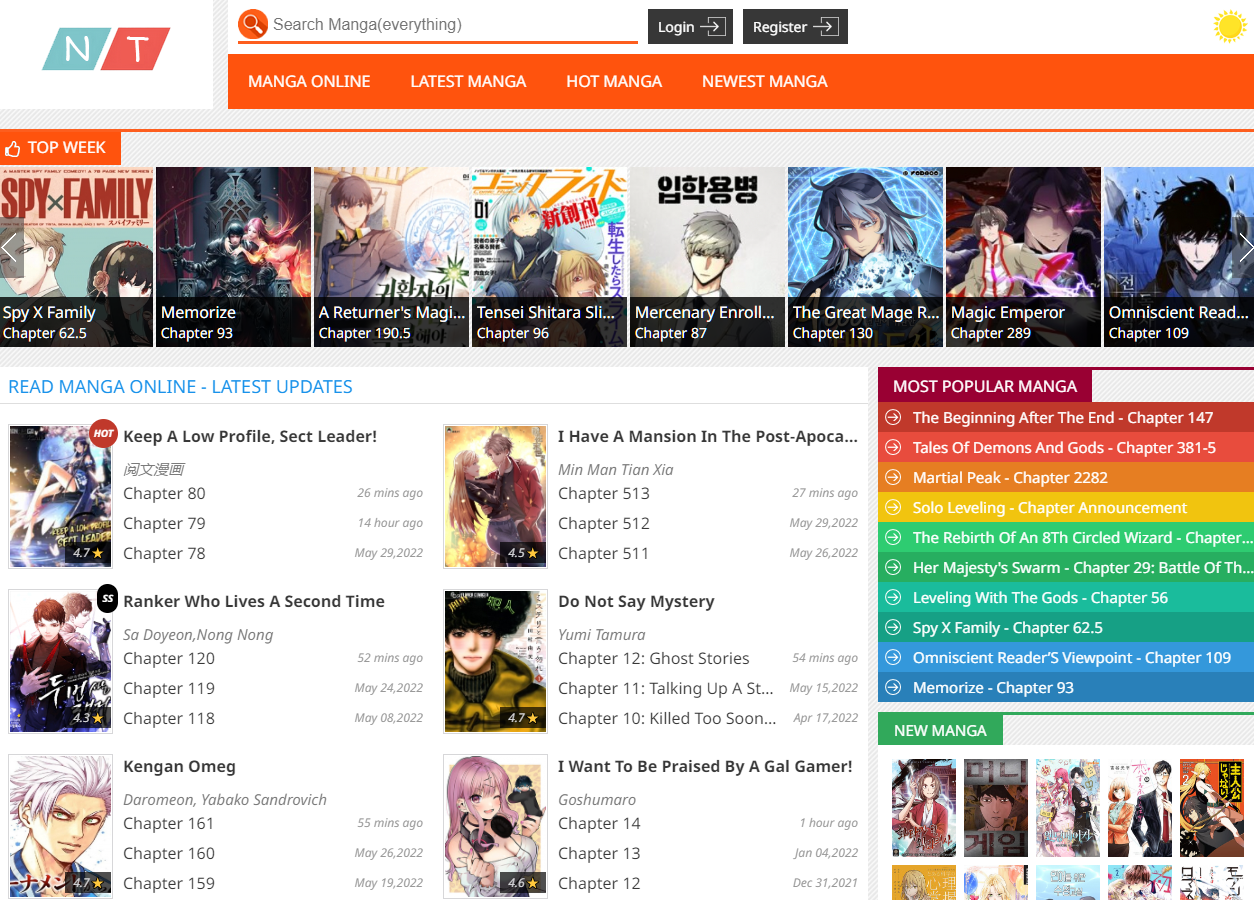🌟 Dịch Vụ Chất Lượng Cao 🌟
✓ 301 Redirect: Chuyển hướng domain an toàn, giữ nguyên giá trị SEO
✓ Guest Post: Đăng bài chất lượng trên các website uy tín
✓ Hỗ trợ tư vấn 24/7
✓ Báo giá cạnh tranh
✓ Thời gian xử lý nhanh chóng
📱 Liên hệ ngay qua Telegram: @subdomaingov
⚡ Hỗ trợ tư vấn miễn phí
manga online
₫9.028.093
manga online - Picks: Dive Into Bold Fantasy Manga Worlds
Product description
, characters learn that love is reciprocal. One person’s willingness to forgive can inspire the other to change, creating a cycle of positivity. This dynamic highlights the interconnectedness of human relationships, underscoring that we all influence one another.
As characters support each other on their journeys toward forgiveness and redemption, they reinforce the notion that vulnerability can lead to profound connections. This theme encourages readers to examine their relationships and consider how they can nurture environments conducive to healing and growth.
FAQs
What is the main theme of To Love Our Enemies?
The primary theme revolves around the complexity of love-hate relationships, highlighting how conflict and understanding can coexist. It examines how individuals can transition from enemies to allies through reconciliation.
Are the characters relatable?
Yes, the characters are designed to embody realistic traits that resonate with readers. Their struggles, vulnerabilities, and growth make them relatable, reflecting the challenges faced in real-life relationships.
How does the artwork enhance the story?
The artwork employs expressive visuals and symbolism to convey emotions effectively. The color palette and panel layout contribute to the overall tone, deepening reader engagement and enhancing the storytelling experience.
Is there a focus on character development?
Absolutely! Character development is a cornerstone of To Love Our Enemies, delving into its unique storytelling and character development that captures the essence of human relationships. The manga intricately presents themes of love, conflict, and resolution, creating a narrative that resonates with many readers. Join us as we unpack its layers and understand why it has garnered so much attention in the manga community.
Understanding the Premise of To Love Our Enemies
At its core, To Love Our Enemies, characters often find themselves oscillating between intense emotions. They are initially set up as adversaries, yet circumstances force them to confront their feelings. This interplay speaks volumes about the nature of relationships. Anger and affection can co-exist; sometimes they even fuel one another. The manga allows readers to witness these transformations intimately, as characters navigate their complex feelings.
This theme also reflects real-life scenarios where individuals must balance animosity with attraction. It prompts readers to question whether love can truly blossom from rivalry. Is there an undeniable magnetism that occurs when two opposing forces clash? The manga answers this by illustrating how love emerges from understanding and shared experiences, regardless of initial grievances.
Character Dynamics: From Enemies to Allies
The character arcs in To Love Our Enemies is about the complexities of love amid conflict. This manga explores how feelings can be convoluted, especially when enemies turn into allies—or even something more.
The Theme of Love-Hate Relationships
Love-hate dynamics are central to the story's appeal.
In the world of To Love Our Enemies serves as a poignant reminder that our greatest adversities can lead to the most profound growth and love.
Read Full: bibimanga
complements its thematic elements beautifully.
Visual Storytelling Techniques
Art plays a significant role in conveying emotions and enhancing the narrative.
The use of expressive facial expressions and body language creates an intimate atmosphere that draws readers in. Artists skillfully capture moments of tension, joy, and vulnerability, allowing readers to feel the heartbeat of the story.
Additionally, the panel layout contributes to pacing and emphasis. When characters experience conflict, the artwork may reflect chaos or fragmentation, aligning with the emotional turmoil. Conversely, moments of tenderness are illustrated with softer lines and harmonious layouts. This intentionality in art enhances the storytelling, enabling readers to fully experience the highs and lows alongside the characters.
Symbolism and Imagery
Symbolism within the manga enriches the reading experience, adding layers of meaning.
Objects and settings often hold significance, representing the internal struggles of characters. For example, a broken mirror may symbolize fractured identities or relationships that have been harmed but can be pieced back together.
Nature also plays a pivotal role, symbolizing growth, change, and renewal. Seasonal changes mirror character development—when characters undergo transformation, the environment often reflects this through blooming flowers or falling leaves. Such imagery connects readers with the characters' emotional journeys, making the story resonate on a profound level.
Color and Tone
The color palette employed in To Love Our Enemies.
The Complexity of Forgiveness
Forgiveness is not a simple act; it's a process examined thoroughly within the manga.
Characters grapple with their past actions and the consequences that follow. The struggle to forgive signifies individual growth—learning to let go of resentment and embrace vulnerability.
This theme resonates particularly well with readers who have experienced betrayal or conflict in their lives. The manga illustrates that forgiveness is less about condoning a wrongdoing and more about liberating oneself from emotional shackles. It focuses on the journey rather than the destination, emphasizing that healing takes time and effort.
The Quest for Redemption
Redemption arcs often provide some of the most poignant moments in To Love Our Enemies.
As characters come to terms with their flaws, they embark on quests to make amends. This pursuit is not merely self-serving; it involves acknowledging hurt caused to others and taking tangible steps toward reconciliation.
The quest for redemption reinforces the idea that change is possible. It invites readers to reflect on their actions and consider how they, too, can strive for growth. By showcasing these journeys, the manga fosters a sense of hope, suggesting that it’s never too late to seek forgiveness and make things right.
The Reciprocity of Relationships
Relationships evolve through the acts of forgiving and seeking redemption.
In To Love Our Enemies are compelling and multifaceted.
Each character brings their own baggage to the table, making their journey all the more relatable. As the story unfolds, we see how their past experiences shape their present interactions. Characters initially defined by hatred gradually uncover layers of empathy, vulnerability, and compatibility.
The dynamic shifts are essential to the narrative's progression. The moments of tension, followed by moments of connection, create a rhythm that keeps readers engaged. It also emphasizes the message that people are not just black-and-white entities; they possess the capacity for change.
Additionally, the bond formed through shared struggles fosters a sense of camaraderie that transcends previous conflicts. It showcases the beauty of reconciliation and the possibility of transformation through understanding.
The Role of Conflict in Growth
Conflict serves as both a catalyst and a barrier in To Love Our Enemies is another aspect worth noting.
Vibrant colors are used during moments of passion or tension, while muted tones signify contemplation or sorrow. This strategic use of color evokes emotion and reinforces the mood throughout the narrative.
Readers subconsciously respond to color choices, allowing them to feel what characters feel without being explicitly told. This artistic technique heightens immersion, ensuring that readers are wholly invested in the unfolding drama.
Themes of Forgiveness and Redemption
Exploring forgiveness and redemption further enriches the narrative tapestry of To Love Our Enemies. Each character embarks on a journey of growth, navigating conflicts and evolving through their experiences.
What lessons can readers take away from the manga?
Readers can learn about the power of forgiveness, the potential for redemption, and the importance of understanding in relationships. It emphasizes that love can emerge from adversity and that personal growth often accompanies struggles.
Conclusion
The Manga summary To Love Our Enemies.
Characters face obstacles that test their resolve and challenge their preconceived notions. These conflicts drive character growth, revealing strengths and weaknesses alike. The struggles they endure together forge a deeper connection, emphasizing that overcoming adversity can strengthen bonds.
Moreover, the way these conflicts are resolved adds depth to the story. Instead of trivializing disagreements, the manga portrays them as essential components of meaningful relationships. Readers observe the transformative power of conflict when approached with honesty and openness.
Through these experiences, the manga teaches readers that enemies can become allies through understanding, patience, and communication. It encourages reflection on personal experiences with conflict, pushing the audience to engage with the material on a deeper level.
The Artistry Behind To Love Our Enemies
The visual representation in To Love Our Enemies
Manga Summary To Love Our Enemies - A Dive into the Complex Dynamics of Relationships
In this article, we will explore the Manga summary To Love Our Enemies encapsulates a rich exploration of love, conflict, and growth. Through its intricate storytelling, relatable characters, and evocative artwork, the manga invites readers to reflect on their own relationships and the complexities they entail. It reminds us that even amid enmity, love can flourish, illustrating the transformative power of understanding and forgiveness. This narrative resonates deeply, encouraging readers to embrace vulnerability and strive for connection. Ultimately, To Love Our Enemies







